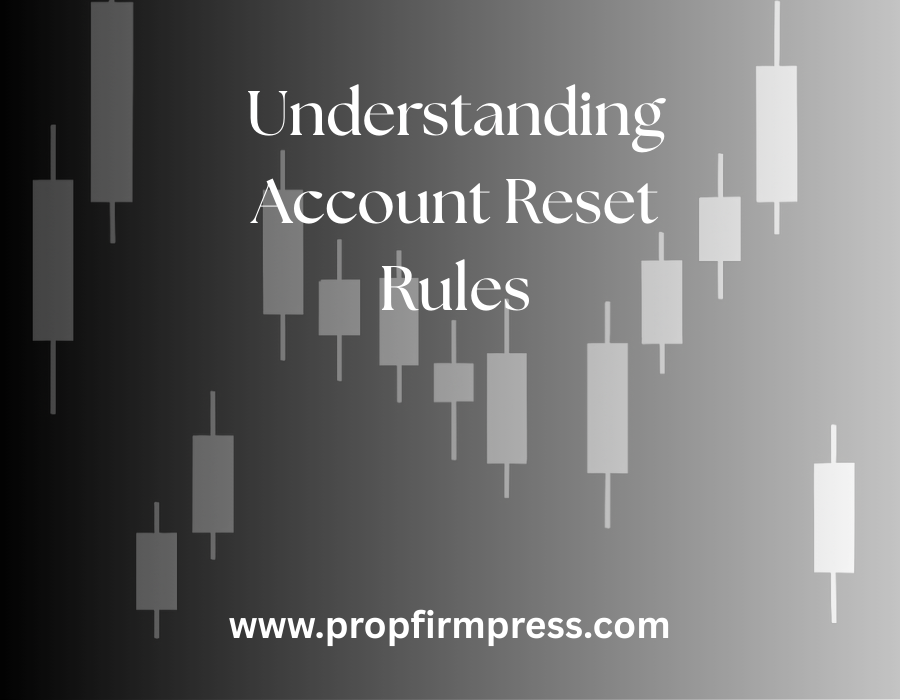Understanding Account Reset Rules
Account reset rules are a critical component in the structure of prop trading challenges and other trading competitions. These rules define the conditions under which a trader’s account balance or progress is reset, impacting their ability to move forward in the evaluation or funding process. Understanding these reset mechanisms is essential for traders aiming to develop effective strategies and maintain consistency throughout their trading journey.
What Are Account Reset Rules?
Account reset rules refer to the specific guidelines set by prop trading firms or challenge hosts that dictate when a trader’s account performance reverts to a previous state, often the initial starting balance. These rules are designed to enforce discipline and risk management by penalizing significant losses, thus ensuring traders adhere to predefined risk limits. A reset typically means losing progress, which can be frustrating but also serves as a protective mechanism for both traders and firms.
Why Do Prop Firms Implement Account Reset Rules?
Prop firms apply account reset rules to maintain a structured and fair trading environment. These rules encourage traders to exercise caution and avoid reckless trading that could lead to blowouts. By enforcing resets, firms safeguard their capital from undue risks and create a transparent framework for evaluating trader performance. Additionally, resets motivate traders to refine their strategies, sharpen risk controls, and maintain consistent profitability, which are all key factors for successful account funding and long-term trading careers.
Common Types of Account Resets
There are several common types of account resets that traders should be aware of when entering any trading challenge:
-
Hard Reset: This occurs when a trader’s account drops below a certain loss threshold, triggering a complete reset back to the initial starting balance with no progress saved.
-
Soft Reset: Instead of a full reset, the account balance is rolled back by a specific amount, allowing partial retention of progress but penalizing excess losses.
-
Partial Reset: This involves resetting only a portion of the trader’s gains or profits, essentially erasing some earned progress but not placing the account back to the original balance.
-
Daily or Periodic Reset: Some challenges enforce resets on a time-based schedule, requiring traders to achieve certain targets within fixed periods or risk reset.
How Account Reset Rules Affect Trading Psychology
The existence of reset rules profoundly influences trader psychology. Knowing that a significant loss can wipe out all progress prompts a more cautious approach to trade management. Traders often become more disciplined with position sizing, stop losses, and risk rewards. However, the fear of reset can also induce stress or hesitation, especially when traders are close to their limits. Understanding this balance and maintaining emotional control is vital for success. Effective preparation and a clear trading plan can help mitigate the psychological impacts imposed by account resets.
Tips for Managing Your Account Under Reset Rules
Successfully navigating account reset rules requires a blend of strategic planning and risk management. First, always adhere to maximum drawdown limits and stop loss guidelines to prevent inadvertent triggers of resets. Second, diversify your trade entries to avoid large single trades that could cause substantial losses. Third, maintain detailed trading records to identify patterns that may lead to losses and adjust your approach accordingly. Lastly, stay patient and focus on consistent small gains rather than seeking high-risk quick profits, as this lowers the probability of triggering resets.
The Role of Account Resets in Challenge Breakdowns
In the context of challenge breakdowns, account reset rules serve as a crucial checkpoint. Challenge hosts often use resets to evaluate not just profitability but the trader’s ability to manage risk under pressure. Reset thresholds become part of the scoring and progression system, impacting the trader’s ability to advance in stages or secure capital. A clear understanding of when and how resets apply enables traders to adjust their tactics within each phase of the challenge, thereby improving their chances of qualifying and succeeding.
Strategies to Avoid Account Resets
Preventing account resets hinges on disciplined risk management. Start by setting strict daily and total drawdown limits and respect them rigorously. Employ protective stops on every trade to cap losses quickly. Make use of position sizing methodologies, such as fixed fractional or percentage risk models, to ensure no trade can cause catastrophic damage. Regularly review past trades to learn from mistakes and refine your approach. Using demo accounts or simulated environments can also help perfect your method, reducing the likelihood of resets when trading live or in challenges.
Understanding Firm-specific Reset Policies
Every prop firm or challenge organizer has unique account reset policies, so it is imperative to read the terms carefully before starting. Some firms allow limited reset opportunities, while others impose strict “one strike, you’re out” rules. Some reset the entire account, whereas others may freeze profits or limit progression temporarily. Understanding these nuances can prevent surprises and help traders prepare accordingly. Sometimes, firms offer extensions or options to recover after a reset, which can be advantageous in long-term challenge strategies.
The Impact of Account Resets on Funding and Capital Allocation
Account resets directly influence the pathway to receiving funded capital in prop trading. Resets can delay or even prevent traders from reaching their funding goals by negating progress and requiring them to restart. This can add both time and psychological strain. On the positive side, resets protect the firm’s capital and create a safety net for all parties involved. For traders, mastering the ability to avoid resets or manage them properly can be the difference between acquiring substantial capital under management or being locked out of funding opportunities.
Trading success comes from discipline and review. Unlock your edge with the Trader’s Monthly PnL Tracker.
